Mastering the closed reed coyote call is simple if you follow the advice of Brian Rush of Rush Custom Callers, who calls in and takes 100 Eastern Coyotes a year.
- Watch his attached video.
- Practice during windshield time.
- Establish a relationship with property owners
- Get access to as many acres of land as possible.
- Hunt the rabbit-tat.
- Study the topography of your stand.
- Know precisely where the coyote will appear and be waiting for it.
Author’s note: I have no relationship to any company or groups mentioned in this article. I receive no compensation, in any form, for mentioning or recommending any products, services, or websites listed below.
Closed reed coyote call fantasies.
Every predator hunter dreams of calling in dozens of coyotes in a single season or taking that monster coyote with a closed reed coyote call.
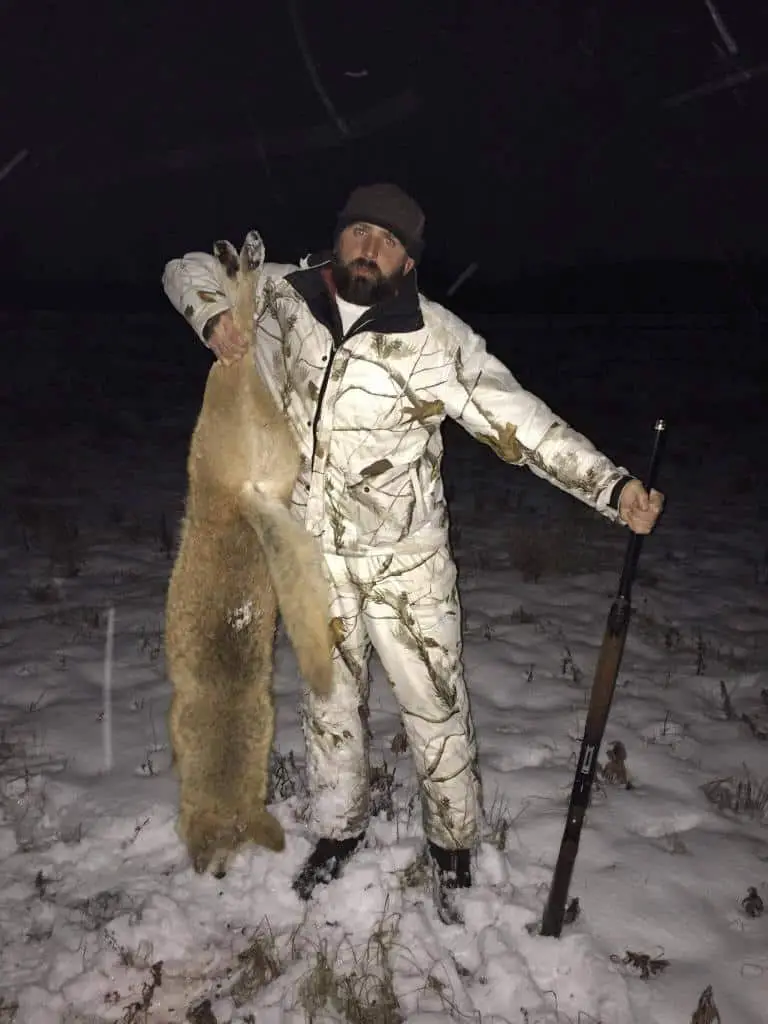
But most hunters never overcome their stage fright, and fewer still use the best closed reed coyote call.
The closed reed coyote call: Minutes to master.
Come on, admit it! You paid hundreds of dollars for an electronic caller for one simple reason; you have stage fright. You feel like everyone will hear and judge you, even if no one is within a mile of you on the darkest, snowiest, coldest night of the year.
Stage fright aside, the closed reed coyote call is simple to use and easy to master. Plus, there is a secret about closed reed coyote calls that no one mentions out loud.
You can suck at using a closed reed call and still call in a coyote.
Even the most hideous attempts by a beginner often produce results.
I experienced this myself while predator hunting one night. My first attempt to use a closed reed call made a sound so unnatural and embarrassing that I quickly tucked the caller back into my jacket and vowed never to use it again.
I think I sat in a stink of shame for two or three minutes, silently praying no one had heard me. I was terrified of turning on my red scanning light, in fear that it would give away the position of the idiot who made that awful noise.
Disgusted, I stood up and flicked the light on to head home. A hundred yards away, standing right out in the open, stood a giant coyote staring at me. Any other hunter would have nailed that dog. I mean, after all, it was as still as a rock, completely fascinated with curiosity. Sadly, I was as surprised as it was and reacted accordingly.
My miserable efforts, however, produced a result often seen in the coyote hunting world. There is something about closed reed coyote calls that excites predators and gets their attention. Often, despite the abilities of the caller and the uncertain sound we make.
The simplest caller to use.
Closed reed calls are simple to use for one reason; they are made with reed length already determined by the manufacturer and fixed in place. While this limits the number of sounds you can make and their volume, it allows users to rapidly-produce a consistent sound they can reliably use in the field.
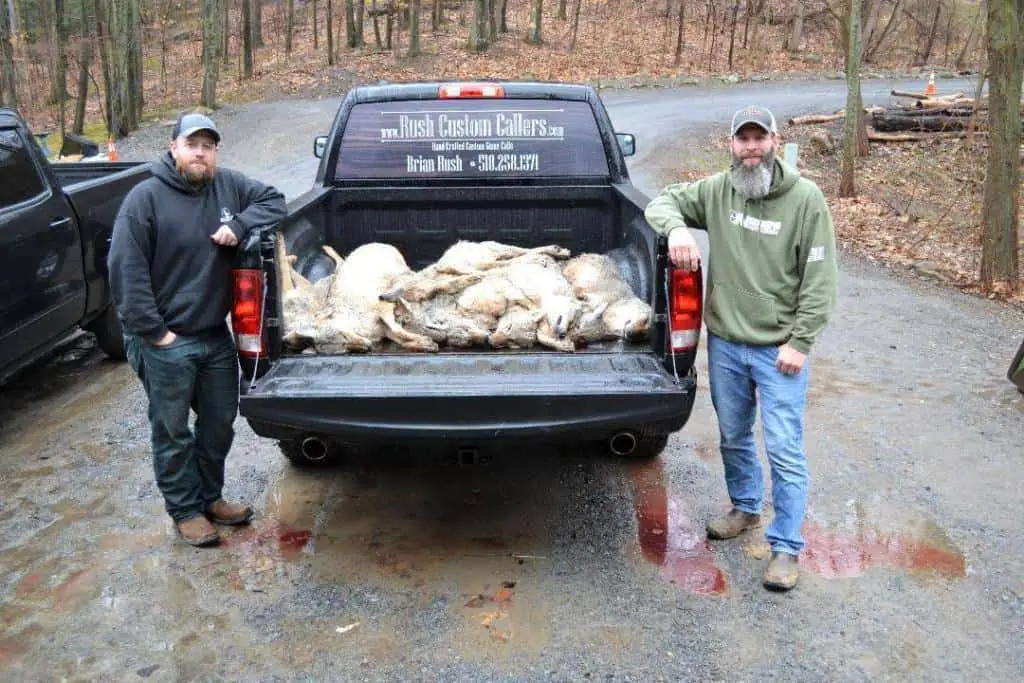
Now, you can call and shoot—all by yourself!
If you think the remotes that come with electronic callers have text that is too small to read at the dining table, wait until you are sitting in a cold dark field in the middle of the night.
And if you are over 40, well, my friend, welcome to the age of presbyopia. That gradual loss of ability to focus on close-up stuff? On a stand, it will have you bent over like a speeding trucker searching for a lit cigarette dropped between their legs. But, if you get lucky and find and select the call you want and call in a coyote, you’ll still have to rip off your reading glasses before aiming to take the shot.
The good news? With a closed reed coyote call, your head is up and on a swivel the entire time you are calling. Better yet, you can also call and shoot all by yourself.
A closed reed caller lets you avoid many of the movements required to set and run an electronic caller. It also reduces the scent load and noise emitted by your tired, sleepy buddy you barely managed to drag out into the field with you.
Limited number of sounds, but more than you’ll ever need.
As Brian will demonstrate in a moment, there are three ways to alter the sound of a closed reed call. You can:
- Change how hard or soft you blow into it.
- Add back pressure (close your hand over the call) to mute the sound.
- Vary the length of breath used.
As long as you remember, the purpose of the call is to sound like an animal in distress (think, emotion); there’s no fancy grip required or unique technique to use to produce a host of calls coyotes will find intriguing.
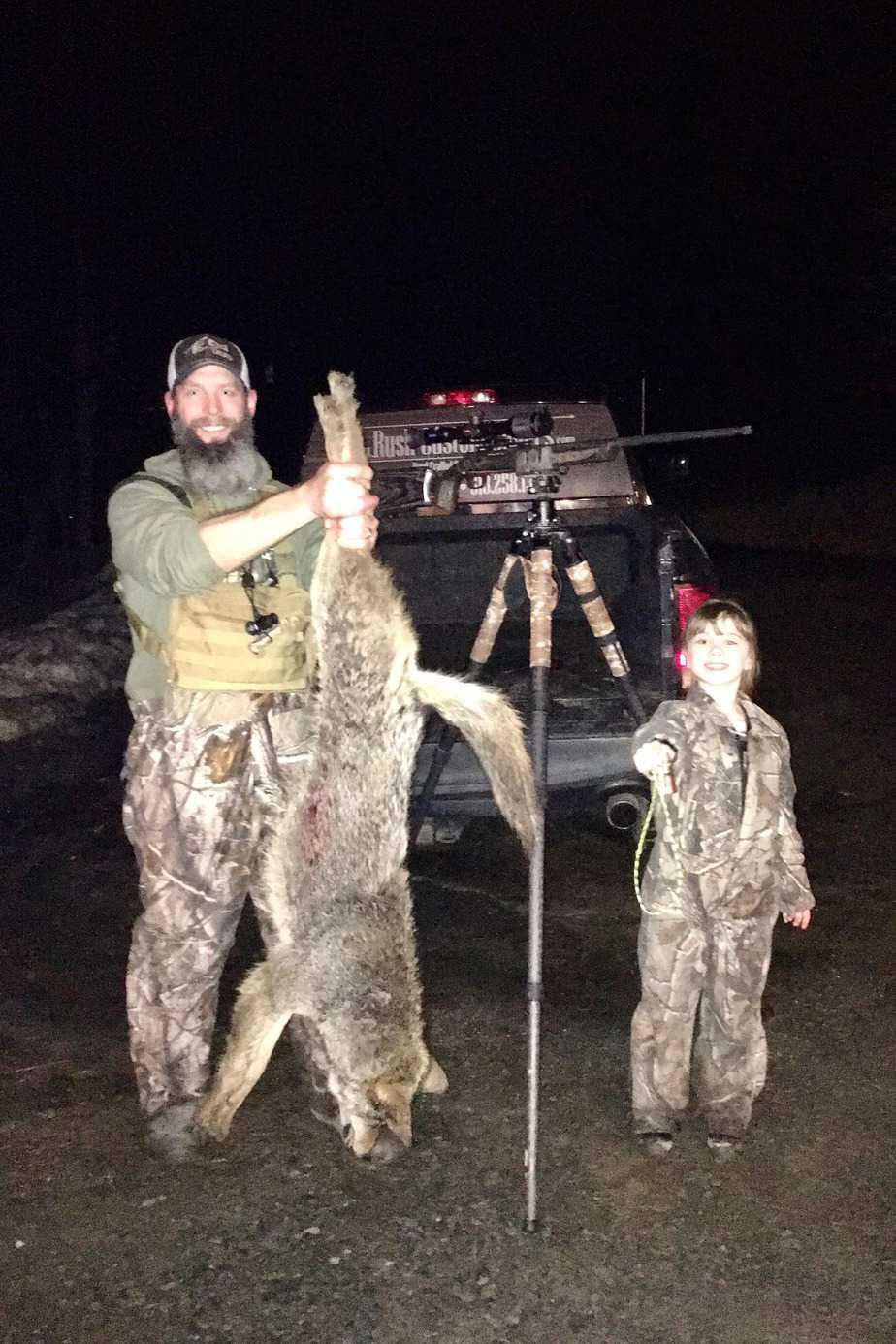
After a bit of practice, you should be able to make the raspy whines and cries you’ve heard in dozens of predator hunting videos. At that point, you’re ready to hunt. While absolute perfection is a quality found only in expensive mass-produced electronic callers, it is not always very attractive to coyotes.
Your minor (or my major) imperfections, however, will have coyotes running to your call, pulled from the woods like metal shavings drawn to a magnet.
Choose a quality closed reed coyote call, and use it for a lifetime.
If there is a drawback to using a closed reed call, it’s a damaged reed you cannot replace. Heavy, frequent use will eventually wear out any reed.
Many factory-made plastic closed reed calls, made and priced to be disposable, have no user-serviceable parts inside. As a result, a broken caller can genuinely suck when they eventually fail in (or out) of the field. But, if you buy a Rush Custom Caller, like the DWO Signature Series Rabbit Squealer, the reed is replaceable.
One tip for closed reed coyote calls: Keep it close to your body in freezing temperatures. Your body’s warmth will prevent the reed from sticking when you need it.
No call is more dependable than a closed reed coyote call.
Many new predator hunters believe an electronic caller is a flawless tool, but that’s not true. Yes, if everything goes perfectly, they work great.
Unfortunately, batteries die, remotes refuse to connect, and speakers crack in the cold. You cannot always find the remote in the dark, and you sometimes drop parts in the snow and never find them again. Plus, if you don’t program it correctly, you might send out the wrong call at the wrong volume. They’re also extremely expensive.
A closed reed coyote call, on the other hand, lasts for a lifetime, is inexpensive, and less complex. How inexpensive? Check out this rabbit squealer.
How easy is it to use a closed reed coyote call?
We asked Brian Rush of Rush Custom Callers that question. He spent less than five minutes demonstrating one of his rabbit squealers and even included a pro tip for use on stubborn, hung-up coyotes.
Trust me; Brian just showed you everything you need to know to use a closed reed coyote call in the field. Bookmark, tag, or do whatever you have to do to rewatch this video until you can produce the same sounds he does.
The DWO Signature series rabbit squealer/distress call.
After 12 years of calling in and taking the elusive Eastern Coyote, Brian Rush has created a series of calls they can’t resist. Perhaps his most famous predator call, the DWO Signature Series Rabbit Squealer/Distress Call, can be seen all over Youtube, virtually sucking coyotes out of treelines and into the open.
After watching videos like this from https://downwindoutdoors.com/, I finally got a chance to meet the owner of Rush Custom Callers and ask him a few questions.
Meet Brian Rush, the maker of the best open reed coyote call.
Brian Rush may be a genius at designing and manufacturing closed reed coyote calls, but he’s a terrible salesman.
50% of any conversation about hunting with him becomes a safety lecture. Years of teaching the New York State Hunter Safety Program have left him with a unique accent if you will. Brian stresses certain syllables and speaks with a distinctive mode of pronunciation when discussing predator hunting safety. It’s understandable and unconscious on his part but still guilt-producing. I find myself swallowing hard a few times and nodding as if to say, “Folks do crazy things,” and then quickly breaking eye contact in shame.
Brian is also relatively modest about his callers. Sure, he’s wearing a company T-Shirt, and the lanyard around his neck has more Rush Custom Callers on it than lights on a Rockefeller Christmas tree. But he is somewhat dismissive of any magical notions I might have about his calls.
Coyotes do coyote things.
A call is one tool, Brian tells me. He started out using mass-produced calls hunting coyotes during the moon phase without the aid of artificial light. He learned the basics by watching FoxPro Fur Takers on cable tv. However, all of his hunting success comes from having the one tool you can’t just purchase and toss in the back of your truck.
“Coyotes do coyote things,” Brian tells me. Understanding a coyote’s needs and the topography of the land it inhabits allows the coyote hunter to make accurate predictions. For example, Brian knows where coyotes can be found, which call to use to get its undivided attention, and what path it will take to reach the source of the sound.
It’s this ability to understand the nature of coyotes and predict their future behavior that is the true secret of his success.
“The color of the caller?” Brian says, repeating my question back to me. The expression on his face says, “Dennis has a lot to learn,” but his answer is kindhearted, “Not important, nor is the wood choice.”
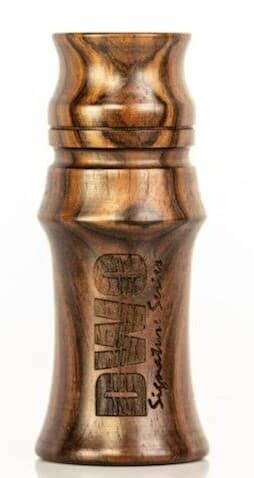
He may be correct, but I have only female offspring, so I think this one is the prettiest.
A private look under the hood.
Brian may claim the wood choice is irrelevant, but he offers all his calls in various wood types. His shop racks are filled with Chechen, Blood, Purpleheart, and Osage wood stock. The essential ingredients to meet any customer’s individual needs.
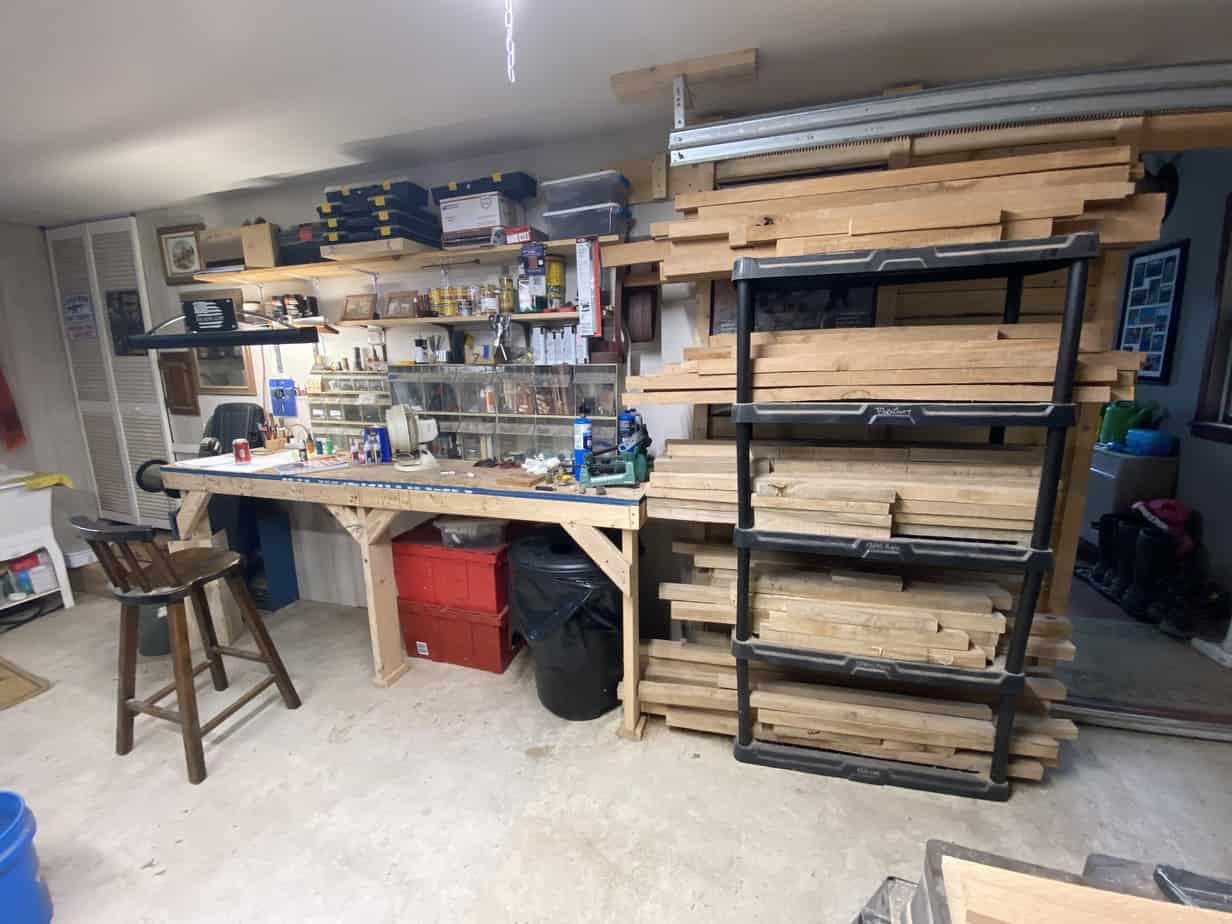
And while color may not affect the call, he knows his customers want to have a hand-crafted tool they can call their own. So, he offers five basic wood colors; Zerba, Canary, Lacewood, Paduak, and Wenge-Wood.
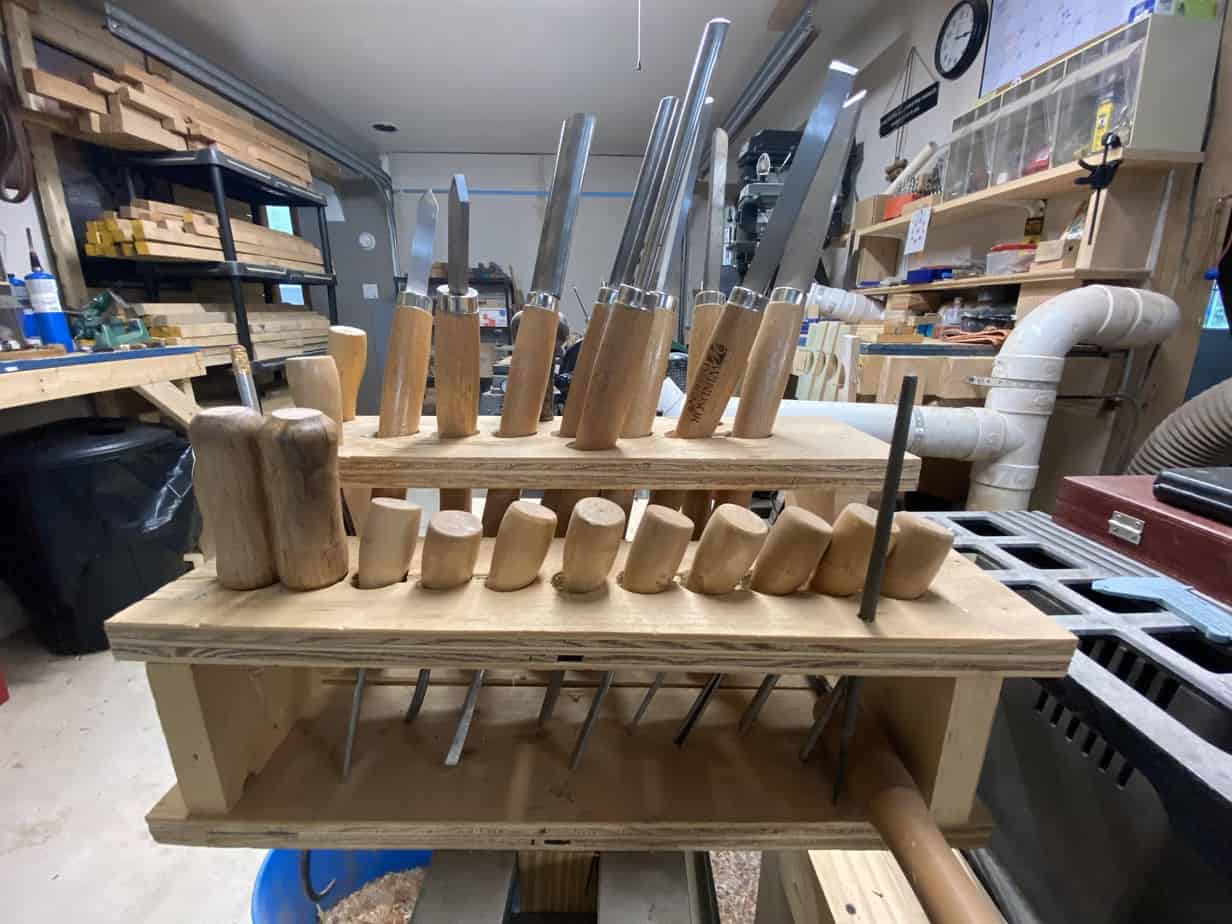
Every call is handmade by Brian Rush himself. With easily replaceable reeds, every call is made to last a lifetime.
Practice, that’s all that’s important with a closed reed coyote call.
Brian recommends taking your caller with you on every car or truck trip.
“Windshield time,” he calls it. No one can hear you, you only need one hand to use the caller, and you can get daily practice in on a routine basis.
Rabbit-tat, access to hunting land, and relationships.
Land. It’s all about land with Brian. He consistently maintains that coyote hunting success is “100%” determined by how much predator-rich land you have permission to hunt on.
Establish a relationship with property owners.
“Establish relationships with property owners,” he tells me. However, he cautions me to wait until after deer season. Few folks have what Brian calls “Our passion for predator hunting,” but many landowners who deer hunt would appreciate someone removing a few coyotes from their property.
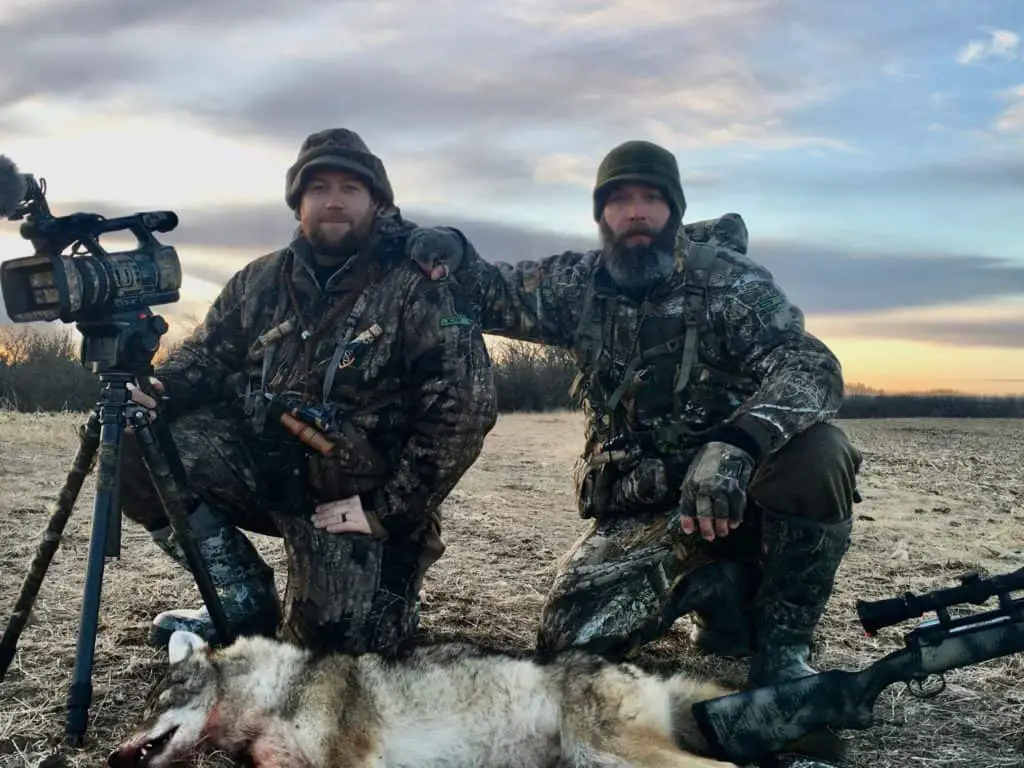
As a predator hunter, you won’t be competing with them for that big buck they have been watching all year, but you may be able to save it for them. Landowners hate discovering a monster buck they’ve followed all year on game cameras laying rotting and half-eaten in their fields.
By hunting safely (Brian made me add that), build on that relationship, and treat their property with great respect. Keep the owner informed of your presence and your successes. Handled well, permission to predator hunt can turn into permission to turkey hunt.
Get access to all the land you possibly can.
You have to knock on many doors, and it can be quite an intimidating task, but your success depends on it. The more acres you have to set your stands on, the more dogs you will call.
Brian keeps pounding this tactic home. I get the feeling he spends a lot of time, hat in hand, standing on strangers’ doorsteps. It’s a boldness I admit I don’t possess, but I’m not alone.
Fear of rejection. That is the fear that is probably the biggest reason so many of us “haunt” the same small parcel of land instead of “hunt” several different predator-rich fields every night.
I promise to work on my speech, knock on at least a few new doors this season, and always have in the back of my mind the thought that I am here to help the property owner protect his livestock and game animals. But, it’s actually true, I’m the one doing the favor if they let me in.
Rabbit-tat?
Rabbit-tat is Brian’s word for the perfect predator place. It’s more than just a location with all the things a bunny needs to live and reproduce in mythical numbers. It’s a place where a hunter can slip in and make a high percentage stand.
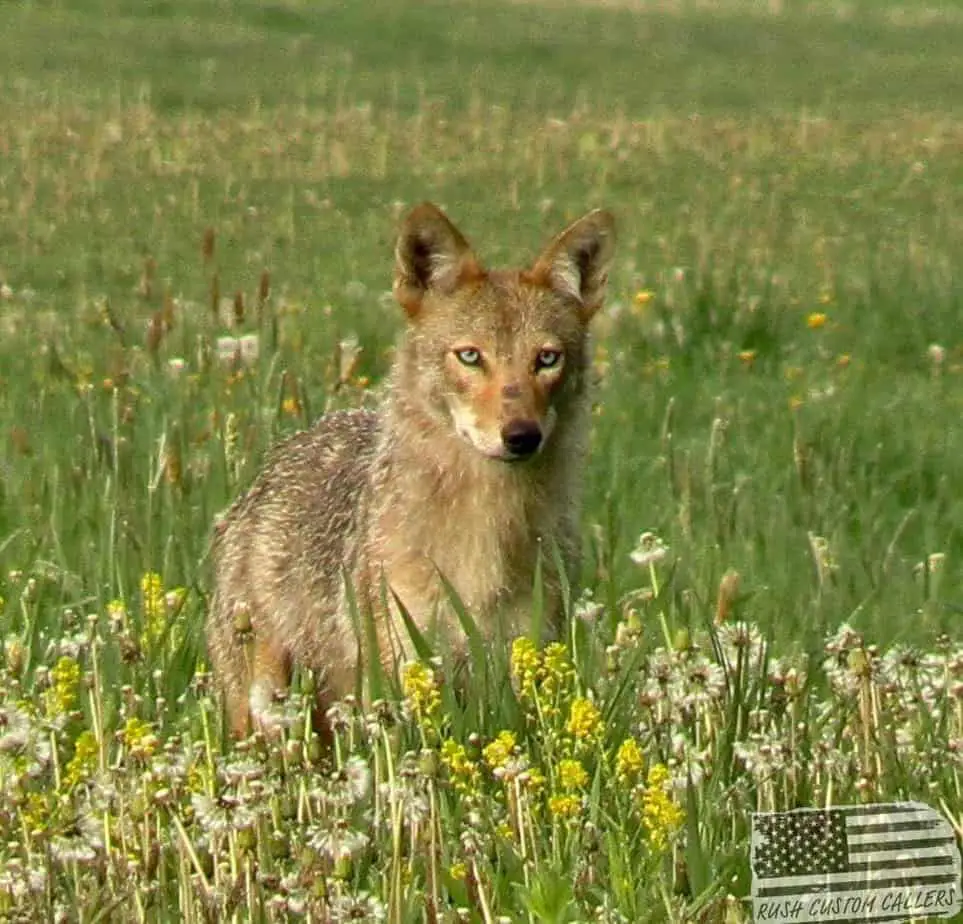
“Topography.” Brian uses this word almost as often as the word “safety.” Rabbit-tat is often very brushy land, and a hunter needs a place to call from that offers both an excellent view and one more secret ingredient: a single, predictable route for a coyote to take.
Brian strongly urges coyote hunters to spend some time studying the topography of the rabbit-tat they plan on calling from before hunting it. The best stands are where coyotes have only one way to get to you and your call. Areas with a cliff or steep slope on both sides are prime locations, but any terrain that limits your target’s approach will help you select your stand location and predict where the coyote will appear.
As you can see in this video, even a perfectly camouflaged coyote is betrayed by movement if the shooter has their stand sited correctly. Note: They are using is a Rush Custom Caller DWO Signature Series Rabbit Squealer in this video.
What’s the range of a closed reed coyote call?
Brian warns new users to expect a call to extend out as far as 1,000 yards. At night, hell, in most places in Eastern Coyote territory, even during the day, this is far beyond light, IR, or thermal scope range. He recommends a coyote hunter plan on spending at least 30 minutes per stand when using the DWO Signature Series Rabbit Squealer.
In other words, you have to give the dog enough time to reach you. Trust me, your call reached him.
How I love the closed reed coyote call, let me count the ways.
- Easy to use.
- Versatile.
- Lightweight.
- Inexpensive.
- AND…EFFECTIVE!
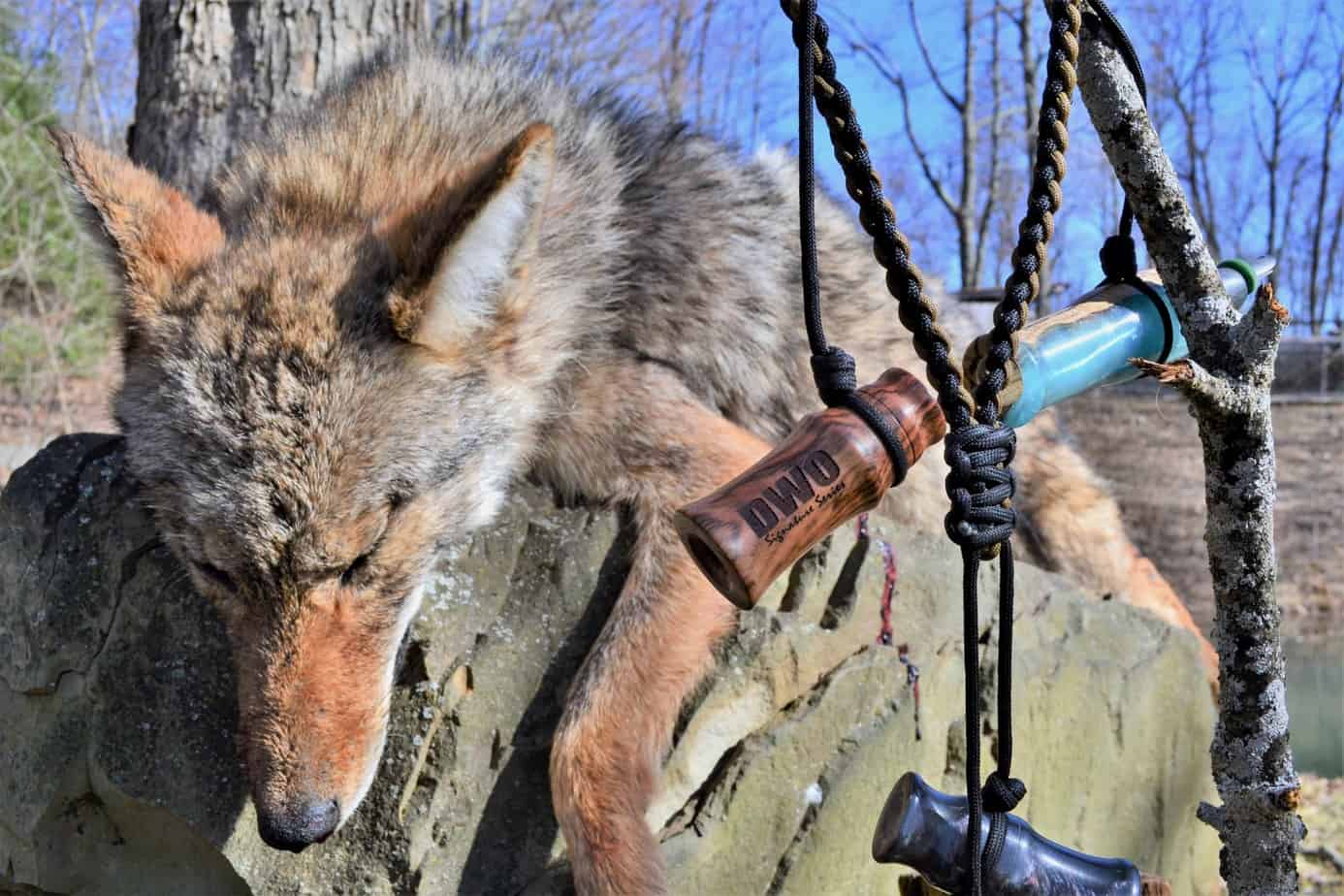
And the feeling you get, when you take that first coyote using nothing more than a hand caller to get its attention, draw it in, and make it hold still? Unforgettable!
In an age of advanced computers and sophisticated electronic devices, nothing beats using an age old method like the wooden, closed reed coyote call.


